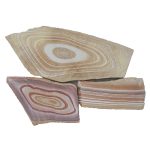Embracing Timeless Elegance A Comprehensive Guide to Mid-Century Modern Cultured Stone
Introduction Mid-century modern design has stood the test of time, captivating interior designers, architects, and homeowners alike with its sleek lines, minimalist aesthetic, and emphasis on functionality. One key element that defines the mid-century modern style is the use of cultured stone, which adds a touch of sophistication and warmth to any space. In this article, we delve into the world of mid-century modern cultured stone, exploring its history, characteristics, popular applications, and tips for incorporating it into contemporary design schemes. History of Mid-Century Modern Cultured Stone The mid-century modern design movement emerged in the mid-20th century, characterized by a focus on clean lines, organic forms, and a seamless integration of indoor and outdoor spaces. click this , also known as manufactured stone or faux stone, became a popular choice for architects and designers during this period due to its versatility, affordability, and ease of installation. Inspired by natural stone but crafted from concrete, aggregates, and pigments, cultured stone offered a cost-effective alternative to traditional building materials without sacrificing aesthetics. Key Characteristics of Mid-Century Modern Cultured Stone Mid-century modern cultured stone exhibits several distinct characteristics that set it apart from other building materials. One of the defining features of cultured stone is its ability to mimic the look and texture of natural stone, providing a timeless and elegant aesthetic. Available in a wide range of colors, shapes, and sizes, cultured stone offers endless design possibilities, allowing homeowners to create custom looks that suit their personal style. Another key characteristic of mid-century modern cultured stone is its durability and low maintenance requirements. Unlike natural stone, which can be prone to cracking, chipping, and staining, cultured stone is engineered to withstand the elements and retain its appearance over time. Additionally, cultured stone is lightweight and easy to install, making it an ideal choice for both interior and exterior applications. Popular Applications of Mid-Century Modern Cultured Stone Mid-century modern cultured stone can be used in a variety of applications to enhance the aesthetic appeal of a space and create a cohesive design scheme. One of the most common uses of cultured stone is as a cladding material for exterior walls, facades, and entryways. By incorporating cultured stone into the exterior of a home, designers can achieve a harmonious blend of natural and man-made elements, adding visual interest and depth to the overall design. In addition to exterior applications, mid-century modern cultured stone is also well-suited for interior design projects. From accent walls and fireplace surrounds to kitchen backsplashes and bathroom vanities, cultured stone can be used to create focal points and add texture to a room. Whether used in a contemporary living room or a retro-inspired kitchen, cultured stone lends a touch of sophistication and character to any space. Tips for Incorporating Mid-Century Modern Cultured Stone into Contemporary Design Schemes When incorporating mid-century modern cultured stone into contemporary design schemes, there are several key factors to consider to ensure a cohesive and visually appealing result. One important consideration is to select the right type of cultured stone for the desired application. With a wide range of textures, colors, and finishes available, it's essential to choose a cultured stone that complements the existing decor and architectural style of the space. Another tip for incorporating mid-century modern cultured stone is to use it strategically to create visual interest and balance within a room. Whether used as an accent wall in a living room or a backsplash in a kitchen, cultured stone can help define different areas of a space and add depth to the overall design. By combining cultured stone with other materials such as wood, metal, or glass, designers can create a harmonious blend of textures and finishes that elevate the aesthetic appeal of a room. Furthermore, lighting plays a crucial role in highlighting the beauty of mid-century modern cultured stone. By incorporating strategic lighting fixtures such as wall sconces, recessed lights, or pendant lamps, designers can create a warm and inviting atmosphere that showcases the unique textures and colors of cultured stone. Additionally, natural light can enhance the visual impact of cultured stone, casting shadows and reflections that bring depth and dimension to a space.  Conclusion Mid-century modern cultured stone continues to captivate designers and homeowners with its timeless elegance and versatility. From exterior cladding to interior accents, cultured stone offers endless design possibilities for creating sophisticated and visually appealing spaces. By understanding the history, characteristics, popular applications, and tips for incorporating mid-century modern cultured stone, designers can harness the beauty and durability of this material to achieve stunning design results that stand the test of time.
Conclusion Mid-century modern cultured stone continues to captivate designers and homeowners with its timeless elegance and versatility. From exterior cladding to interior accents, cultured stone offers endless design possibilities for creating sophisticated and visually appealing spaces. By understanding the history, characteristics, popular applications, and tips for incorporating mid-century modern cultured stone, designers can harness the beauty and durability of this material to achieve stunning design results that stand the test of time.